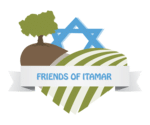Parashat Vaerah 2010 Revealed Miracles In Contrast to Hidden Ones — Moses Vs. Our Forefathers
Rabbi Moshe Goldsmith on Exodus Chapter 6 http://youtu.be/eYaVCjzdZiY
Parashat Shemot – Dec 2010 Understanding exile and redemption
Rabbi Goldsmith Exodus Chapter 1: http://youtu.be/WekT8W8kwxg
Ve’emunatcha Baleylot”- Mikeitz-Chanukah – 2010
“Ve’emunatcha Baleylot”- Mikeitz-Chanukah December 3, 2010 Leah Goldsmith The portions of Yosef come to light during the darkest days of the year always at the
Parshat Vayeshev – 2010
Parshat Vayeshev November 26 2010 Leah Goldsmith Dear readers- As I turned on my faucet to get ready for Shabbat – I really almost looked up into it to see if water would come
Parshat Vayishlach – 2010
Parshat Vayishlach November 19 2010 Leah Goldsmith Our Rabbis tell us, Ma’aseh avot siman lebanim- What happens to the fathers is a sign of what will happen to the future g
Parshat Chaye Sarah – 2010
Parshat Chaye Sarah October 30, 2010 Leah Goldsmith Chazal tell us that Yitzchak mourned for his mother three years. This is outstanding in that a person generally mourns for a s
Lech Lecha- Vayera – Sarah, Mother Earth and….. 2010
Lech Lecha- Vayera – Sarah, Mother Earth and….. October 22, 2010 Leah Goldsmith Chazal dedicate many discourses to the superpower traits of the Matriarchs and prophetesses. &
Vezot HaBracha – This is the blessing – 2010
Vezot HaBracha – This is the blessing 2010 September 22, 2010 Leah Goldsmith This is the last parsha of the Torah. It is also the last day of Moshe Rabbeinu’s life. He st
Parshat Matot – Masey – 2010
Parshat Matot – Masey July 8, 2010 Leah Goldsmith “And the Lord spoke to Moshe saying: Command the Children of Israel and say to them, when you come into the Land of Kena
Parshat Chukat-Torah thoughts on current events – 2010
Parshat Chukat-Torah thoughts on current events June 18, 2010 Leah Goldsmith The world revolves on an even axis of mercy and judgment. These are the two legs that support the wor

